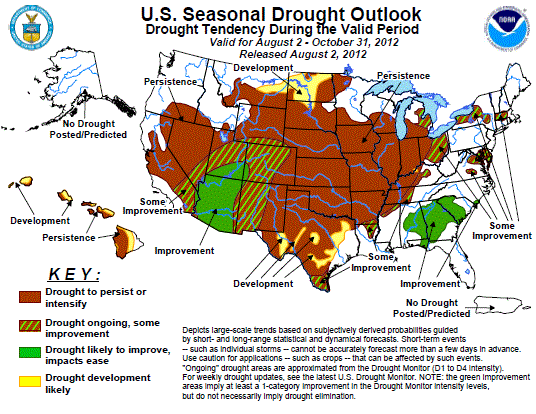 Welcome to the weekly roundup of great articles, facts and figures. These are the weekly finds that made our eyes pop.
Welcome to the weekly roundup of great articles, facts and figures. These are the weekly finds that made our eyes pop.
Government Complicit in Libor Scandal
So says Neil Barofsky, former TARP general inspector, in the below Bloomberg Law interview. The LIBOR fixing scandal is ongoing, with a flurry of lawsuits being filed against the banks. Barofsky talks about the lack of action and notes the Banks' legal defense strategy will probably be based on the fact the federal government knew banks were manipulating the LIBOR and did nothing.
For Profit College Scam
The Village Voice exposed a real horror show in for profit colleges. Basically they are a scam.
You might not know it, but you're sitting on $117,000. That's basically how much every American is potentially worth in government student aid. Want to attend grad school? Throw in another $114,000.
And as for-profit colleges have discovered, an 18-year-old with 100 large makes for a very easy mark.
In order to get in on the gravy train, a school only needs accreditation from some supposedly neutral body. But Congress neglected to say who should do that accrediting, resulting in a system loaded with charlatans. Some agencies have built sturdy reputations over decades. Others are little more than rubber-stamp factories, more geared toward gobbling up members' dues than safeguarding kids.
Citigroup Chairman Sandy Weill Says End TBTF
Former Citigroup Chair, Sandy Weill, creator of the mega bank, mega merger, shocked the status quo by calling for the big banks to be broken up.
Matt Taibbi goes through the history of resistance against Glass-Steagall and questions Weill's motives.
Poor Sandy’s pension is gone. No wonder he’s rethinking things.
The World Has Too Many People
The LA Times has an in depth series, Beyond 7 Billion on World overpopulation. The series has graphs, videos and facts galore. Bottom line, there are already too many people on the planet and it's only going to get worse. What's most important in this article series is never ending unlimited migration promoter, the LA Times, finally acknowledges population size does matter.
After remaining stable for most of human history, the world's population has exploded over the last two centuries. The boom is not over: The biggest generation in history is just entering its childbearing years. The coming wave will reshape the planet, and the impact will be greatest in the poorest, most unstable countries.
Nearly 1 billion people are malnourished, and a child dies of hunger every 11 seconds. By 2050, farmers would have to double crop production to meet the demand.
Drought
Drought is hitting the country, so far the worse since 1956. One of the U.S. biggest exports is soybeans, so this is not good news for the economy, never mind food inflation. NOAA:

The last time the lower 48 States had a comparable area of drought (based upon the monthly Palmer Drought Index) was in 1956, according to NCDC. The drought and heat arrived at a critical time for Midwestern agriculture, especially corn. The combination of heat and dryness has severely reduced the quality and quantity of the corn and soybean crop, with 48 percent of the corn and 37 percent of the soybeans rated as poor or very poor as of July 29 by NASS/USDA. Over half the corn was adversely rated in 8 major corn-producing states, including 83, 79, 71, and 69 percent in Missouri, Kentucky, Illinois, and Indiana, respectively. Similarly, the soybean crop rated poor to very poor exceeded 50 percent in Missouri, Kansas, Illinois, Indiana, and Kentucky. Unfortunately, drought is expected to develop, persist, or intensify across these areas, and temperatures are likely to average above normal. With dry weather expected in the northern Plains the next few weeks and most locations already abnormally dry.
Lack of Data on Foreclosures
We dig out as much foreclosure data as possible, for example, in this article, we have some totals. That said, Matt Stoller overviews the insanity on real housing data:
There are four separate widely followed private foreclosure tracking services — Corelogic, LPS, RealtyTrac, and the Mortgage Banker’s Association National Delinquency Survey. Each has problems, and none is comprehensive. There are also government sources for foreclosures. The Office of the Comptroller of the Currency, which regulates national banks, has a widely cited Mortgage Metric Report. The data for that report comes from the big mortgage services, and it is “rigorously reviewed”, according to Bryan Hubbard, spokesman for the OCC. It’s considered good data, but it covers only 50 to 60 percent of the market, the part controlled by services regulated by the OCC. The FHFA tracks some limited data around Fannie and Freddie loans, and the VA and FHA track some data around loans guaranteed by those agencies. But like the private data services, none of these foreclosure sources are comprehensive.
Happy Saturday and if you have found a gem, a jaw dropping bit of news, please share with the rest of the class in the comments below.

Recent comments